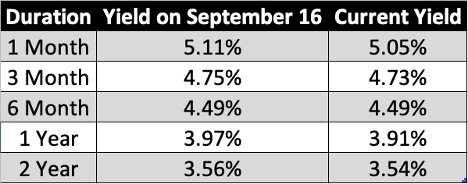This past Saturday was Fall Fun Day up here in the mountains of Virginia.
Fall Fun Day is an annual festival featuring food, beverages, music, and a variety of outdoor games for adults and children alike. There are sack races… mummy wrap contests… hay rides… and I witnessed a little spontaneous karaoke as well.
Here’s a shot of a small gathering underneath an ancient elm tree:

There’s a long tradition of annual harvest festivals throughout America’s Appalachia region.
The autumn harvest itself may have lost significance since our conquest over food scarcity… but these annual celebrations are still rooted in the region’s agricultural heritage. It’s Thomas Jefferson’s vision for America actualized.
While Fall Fun Day has become a normal occurrence for us each year, there’s nothing normal about what’s happened to our economy over the past 16 years.
Continue reading “Normal and not normal…”
